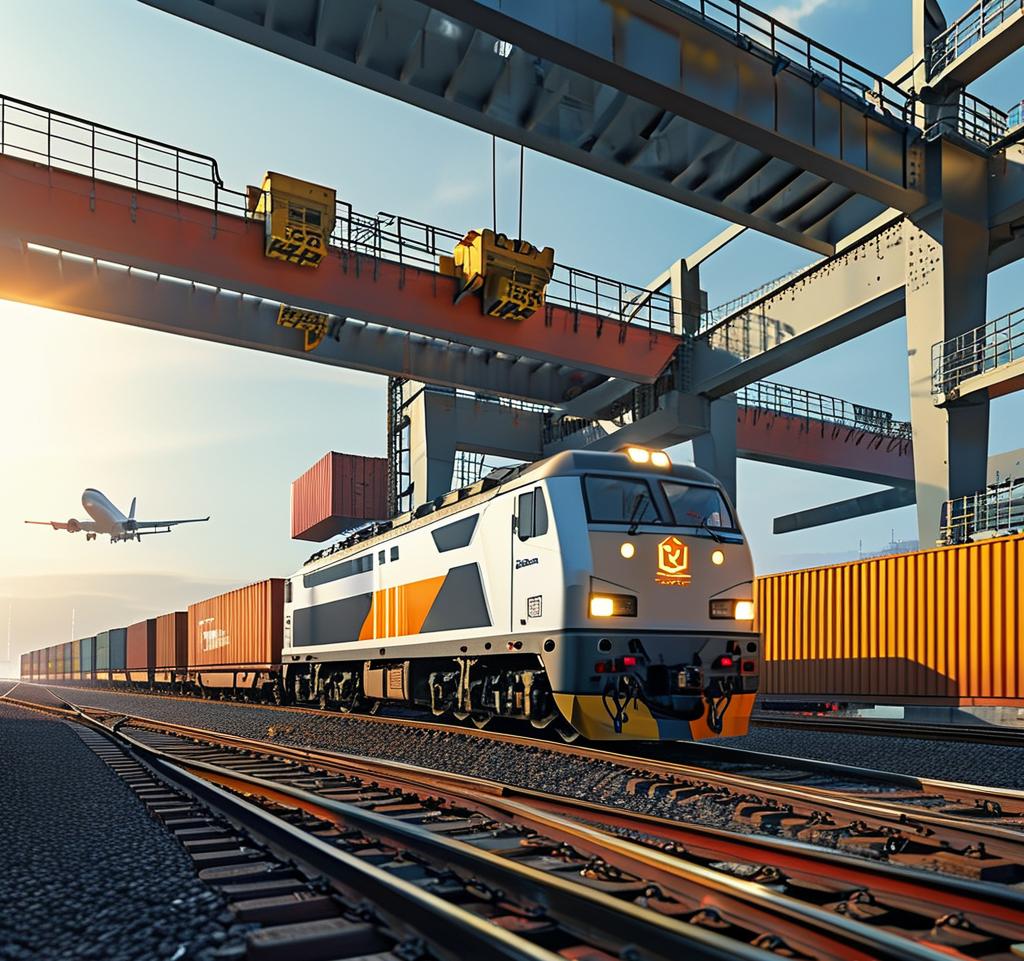- By TOP CHINA FREIGHT
- July 15, 2025
- Shipping
Why Choose Rail Freight from China to Europe?
In today’s fast-paced global marketplace, businesses are constantly seeking smarter, faster, and greener ways to move goods across continents. Rail freight along the China–Europe corridor has emerged as a compelling alternative—combining speed, cost-effectiveness, reliability, and sustainability like never before.

1. Quicker than Sea, Cheaper than Air
One of the biggest advantages of rail transport is its superior transit time. While traditional sea freight from China to Europe can take 30–45 days, rail shipments typically complete in just 12–20 days. This makes rail freight roughly twice as fast as sea, and at the same time, 4–5 times more economical than air freight.
2. How Much Does Rail Freight Cost?
Rail freight costs depend on the route, cargo type, and destination, but they’re generally 30–50% cheaper than air freight while being significantly faster than sea.
Here’s a rough estimate for a 40-foot container:
From Wuhan to Hamburg: USD 7,000–9,500
From Chongqing to Duisburg: USD 6,500–8,500
LCL shipping (Less-than-Container-Load): Around $0.80–$1.50 per kg
3. Reliable Schedules, Minimal Disruptions
Rail corridors operate with fixed departure days, consistent transit times, and minimal delays—offering enhanced reliability and lower risk of congestion or weather disruption.
4. Enhanced Sustainability
Rail freight emits significantly fewer CO₂ emissions compared to air and even sea transport. It’s the perfect choice for companies with environmental goals and ESG commitments.
5. Growing Popularity Among Global Shippers
Rail freight now handles millions of containers annually and continues to grow in popularity, especially as businesses seek stable, cost-effective, and faster alternatives to ocean freight.
6.Summary Comparison
| Criteria | Rail Freight | Sea Freight | Air Freight |
|---|---|---|---|
| Transit Time | 12–20 days | 30–45 days | 2–7 days |
| Cost (per container) | Mid-range | Lowest | Highest |
| Emissions | Low-to-medium | Medium | Very high |
| Reliability | High | Moderate | High (weather risk) |
| Capacity | Moderate | Very high | Limited |
Is Rail Freight Right for You?
Rail freight is ideal if you need:
Delivery faster than sea, but at lower cost than air
Reliable lead times and real-time tracking
Greener logistics with lower emissions
Professional handling from pickup to delivery
Why Choose TJ China Freight for Rail Shipping?
At TJ China Freight, we combine experience, competitive pricing, and full-service logistics to help your cargo move smoothly from factory to final destination.
1.Cost Advantage
We offer some of the most competitive rail freight rates in the market thanks to strategic partnerships with top rail providers.
2.End-to-End Service
From pickup, documentation, customs clearance, to final-mile delivery, we handle it all. Our expert team ensures timely delivery and peace of mind throughout the process.
3.E-Commerce & Amazon Ready
We support FBA prep, relabeling, palletizing, and direct delivery to Amazon Europe fulfillment centers via rail. Ideal for Amazon sellers and e-commerce businesses seeking efficient fulfillment options.
Need a Shipping Quote?
Click below to get a free, no-obligation quote from TJ China Freight.
We’ll respond within 24 hours with the best shipping options for your cargo.
FAQ:
What is rail freight in China?
Rail freight in China refers to the transportation of goods via the country’s extensive railway network, which connects major industrial hubs, inland provinces, and international routes—especially as part of the China-Europe Railway Express.
What countries can China ship to by rail?
China can ship by rail to over 20 countries, primarily in Europe and Central Asia. Popular rail freight destinations include Germany, Poland, Russia, the Netherlands, Kazakhstan, and more. This is facilitated through the Belt and Road Initiative and the China-Europe Railway Express.
What are the main rail freight routes from China?
Key routes include:
- Chongqing – Duisburg (Germany)
- Xi’an – Hamburg (Germany)
- Yiwu – Madrid (Spain)
- Chengdu – Łódź (Poland)
These routes cross through countries like Kazakhstan, Russia, and Belarus.
What kind of goods are suitable for rail freight?
Rail freight is suitable for electronics, automotive parts, machinery, fashion, pharmaceuticals, and perishable goods that require faster delivery than ocean freight but not the high cost of air.
What documents are needed for rail freight?
You typically need:
- Commercial invoice
- Packing list
- Rail waybill (CIM or SMGS)
- Certificate of origin (if applicable)
- Customs clearance documents
